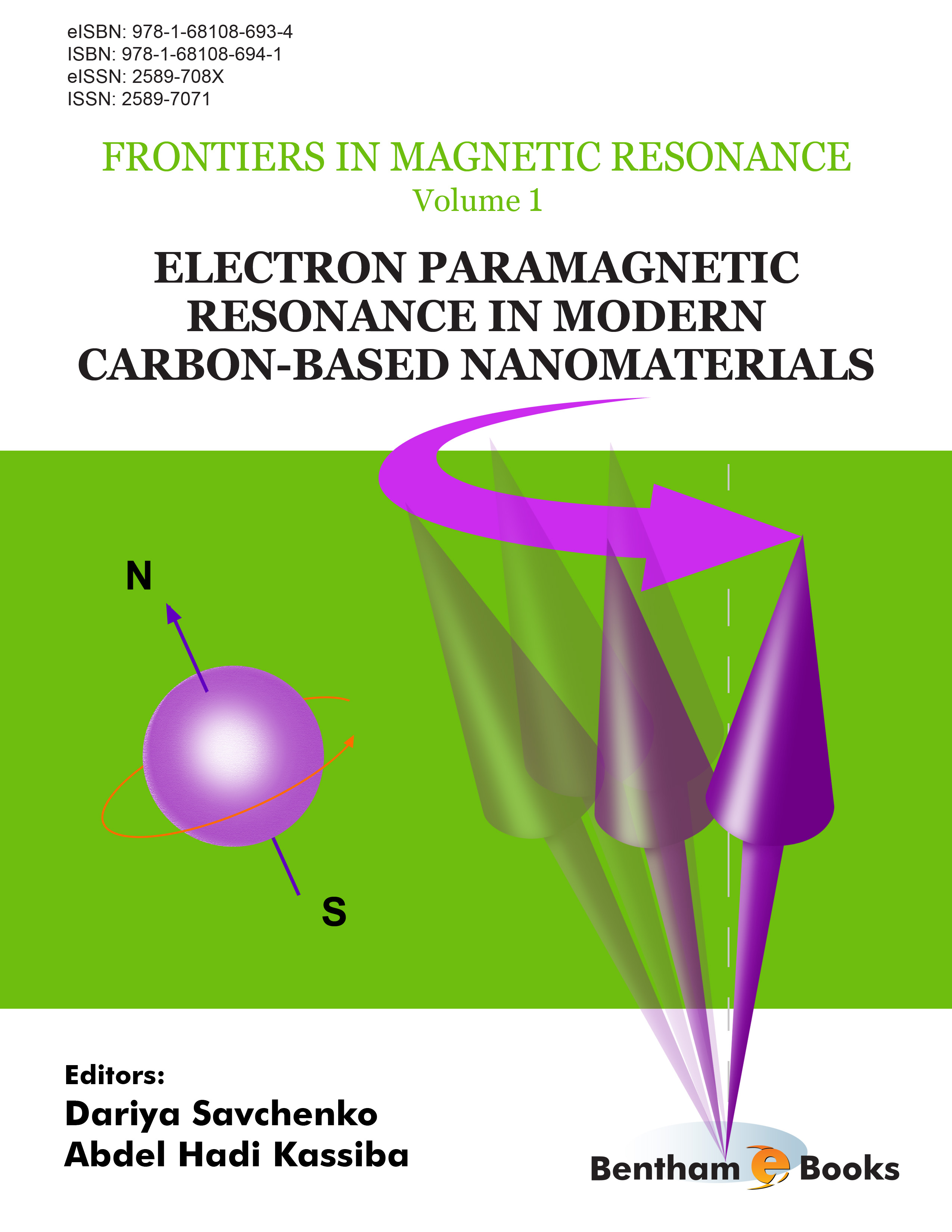Introduction
This volume presents information about several topics in the field of electron paramagnetic resonance (EPR) study of carbon-containing nanomaterials. It introduces the reader to an array of experimental and theoretical approaches for the analysis of paramagnetic centers (dangling bonds, interface defects, vacancies, and impurities) usually observed in modern carbon-containing materials such as nanographites, graphene, disordered onion-like carbon nanospheres (DOLCNS), single-walled carbon nanotubes (SWCNTs), multi-walled carbon nanotubes (MWCNT), graphene oxide (GO), reduced graphene oxide (rGO), nanodiamonds, silicon carbonitride (SiCN) and silicon carbide (SiC) based composites and thin films.
In particular, the book describes in detail:
- - The fundamentals of EPR spectroscopy and its application to the carbon-containing materials;
- - The resolution of the EPR signals from different species in carbon materials;
- - EPR characterization of spin dynamics in carbon nanomaterials;
- - Magnetic properties of DWCNTs and MWCNTs polymer composites;
- - EPR investigations on GO, rGO and CNTs with different chemical functionalities;
- - EPR spectroscopy of semiconducting SWCNTs thin films and their transistors;
- - In-situ EPR investigations of the oxygenation processes in coal and graphene materials;
- - The two-temperature EPR measurement method applied to carbonaceous solids;
- - Characterization of impurities in nanodiamonds and SiC nanomaterials and related size effects by CW and pulse EPR techniques;
- - Application of multifrequency EPR to the study of paramagnetic defects in a-Si1-xCx:H thin films and a-SiCxNy based composites.
This volume is a useful guide for researchers interested in the EPR study of paramagnetic centers in the carbon-containing thin films, nanomaterials, ceramics, etc. It is also a valuable teaching tool at graduate and postgraduate levels for advanced courses in analytical chemistry, applied sciences and spectroscopy.

